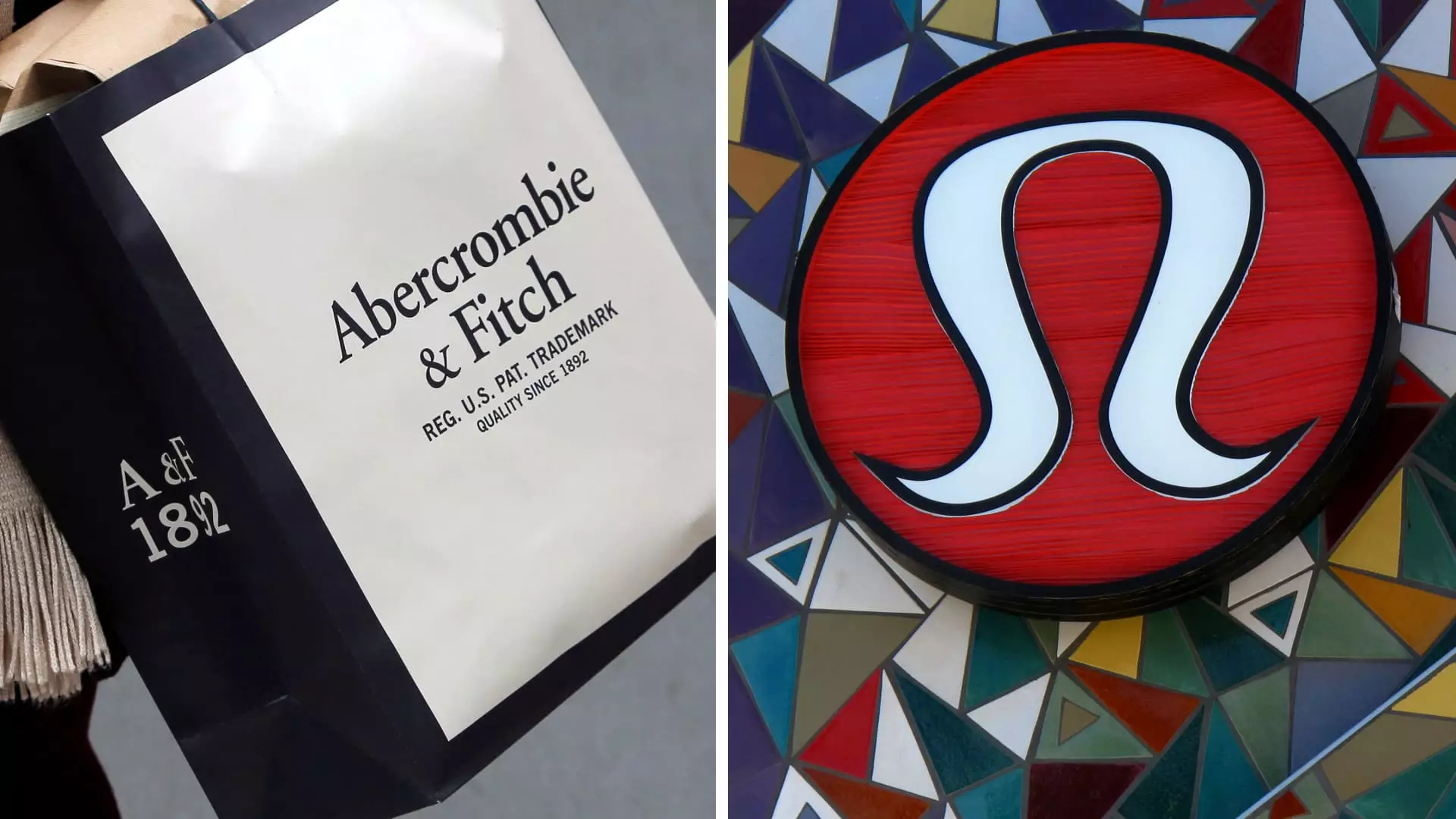The retail landscape often reveals valuable insights during the holiday shopping season, and this year was no different. Leading retailers reported varied results as they assessed the early performance indicators of the critical holiday quarter. While many companies, including Lululemon, Abercrombie & Fitch, and American Eagle, offered more optimistic sales projections following an encouraging consumer response, their stock performances did not parallel this positivity. As the market reacted, it became evident that expectations were high, and investor sentiment could be fragile.
Lululemon’s robust sales outlook—an anticipated increase between 11% and 12%, translating to approximately $3.56 to $3.58 billion—illustrates a strong performance. The company also adjusted its earnings predictions upward, expecting a profit per share of between $5.81 to $5.85, a significant revision from prior estimates. Such improvements suggest that Lululemon’s product offerings resonated effectively with consumers, thereby driving demand during the holiday season. Nonetheless, despite this optimistic outlook, investor reactions in the stock market were tepid, with shares falling more than 5%.
Similarly, Abercrombie & Fitch managed to exceed initial sales projections slightly, revising its expectations to a growth of between 7% and 8%. However, the company’s stock witnessed a dramatic slump of around 17%. This disparity highlights a critical phase for Abercrombie, as it navigates the complexities of growth sustainability post a period characterized by explosive expansion. Investors appear to be reassessing their expectations; while the brand’s performance is commendable, the decline in stock price reflects market skepticism regarding prolonged growth potential.
On the opposite end of the performance spectrum, Macy’s reported disappointing results, aligning its projections for the holiday quarter with lower expectations. The retail giant forecasted sales to hover at the lower end of its previous estimates, resulting in a stock drop of over 6%. This serves as a stark reminder that not all retailers are faring well in the current economic climate. Macy’s struggle contrasts sharply with the success experienced by its peers, prompting questions regarding its market strategy and the effectiveness of its customer engagement initiatives.
Urban Outfitters displayed a mixed bag of results, with a notable 10% increase in net sales compared to last year. However, a decline in comparable sales within its flagship Urban brand raises concerns about its competitive positioning against other brands like Anthropologie and Free People. While Urban Outfitters experienced substantial growth in its rental service Nuuly, showcasing a critical pivot towards e-commerce and subscription models, the overall picture indicates a company grappling with brand identity and customer loyalty.
The juxtaposition of growth in certain segments while facing challenges in others encapsulates the complexities many retailers currently encounter. Urban Outfitters’ experience reveals that growth is not solely defined by increases in revenue but also by a cohesive brand strategy that resonates with consumers across all product lines.
The broader economic environment significantly influences retail performance. Predictions from the National Retail Federation suggested modest growth in retail sales, ranging between 2.5% and 3.5%. When inflation is factored in, the actual growth may appear minimal. Despite these projections, Mastercard SpendingPulse reported a noteworthy year-over-year sales increase of 3.8% during the critical shopping period from November through December 24. This nuance indicates that while consumers remain cautious, they may still engage with retail in a measured but positive manner.
This holiday season serves as a litmus test for retailers, showcasing the evolving landscape post-pandemic. Companies have shifted their strategies to accommodate changes in consumer behavior and economic pressures. As retailers strive to leverage their brand strengths, they must also remain vigilant about market reactions and investor sentiments that can indeed sway despite positive sales growth.
As the dust settles from this year’s holiday shopping season, it becomes clear that retailers must recalibrate their strategies for sustainable growth. Emphasizing profitability over sheer sales volume may become a predominant theme, especially for brands like Abercrombie, which are adapting their models for long-term viability. Additionally, the convergence of online and in-store shopping experiences will become increasingly vital as retailers innovate to meet consumer expectations.
Understanding consumer behavior and addressing market dynamics will remain imperative for companies aiming to thrive in an unpredictable economic landscape. With high consumer expectations, brands must navigate the dual challenges of maintaining growth while ensuring customer satisfaction in a landscape that continues to evolve in real-time. The insights drawn from this holiday season will play a pivotal role in shaping retail strategies and investor confidence as we move forward into the new year.


Leave a Reply